It is not very difficult to care for a house fern at home, so many plant lovers choose this instance among many. Of the many species of ferns, nephrolepis is the most popular. It has a beautiful and magnificent crown that can revive even the most boring interior.
Material Content:
Indoor fern: nuances of growing
Florists love fern for its beauty and unpretentiousness. However, there are still growing characteristics, and to make the plant look attractive, they should be observed.
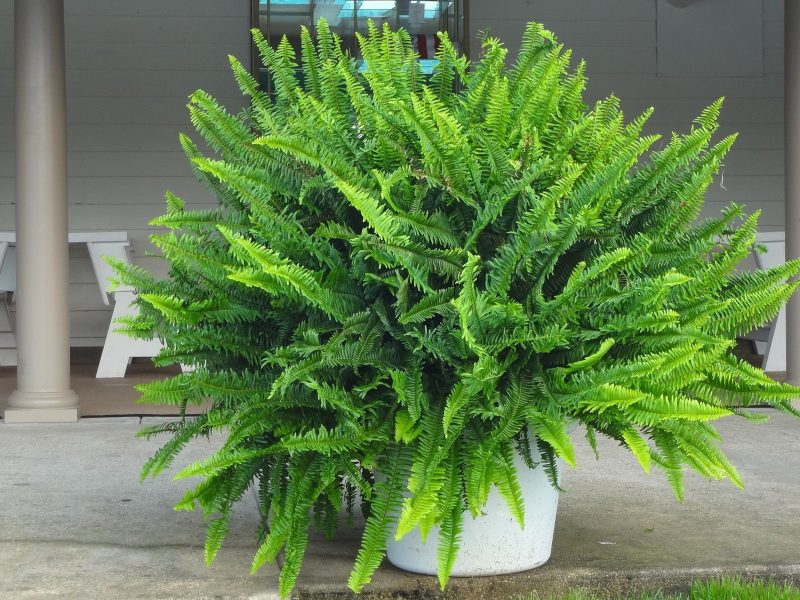
The main feature of nephrolepis is its ability to detect dirty air, in which it immediately begins to wither.
Unsuitable conditions for him is to be in a stuffy, smoky or dusty room. “Do not like” fern low humidity.
The flower can stoically tolerate the lack of regular watering, high or low temperatures. But if the air is not clean enough, its leaves will quickly turn yellow and dry.
Home Care
It’s easy to take care of an indoor fern. Like any other home plant, it requires a certain soil, a suitable location in the apartment, watering and spraying. Not without periodic fertilizer. In addition, you should know the features of a flower transplant, since you need to do this every year because of its rapid growth.
Soil requirements
The plant prefers loose soil with a large number of leaves and humus.Sometimes peat or needles may be present in it. Earth must be very loose, airy. Through it, water will easily flow to the roots.
The roots of the plant can rot from overflow, so the pot needs good drainage.
Ready soil can be purchased at the store or prepared on your own, if there are sufficient skills for this.
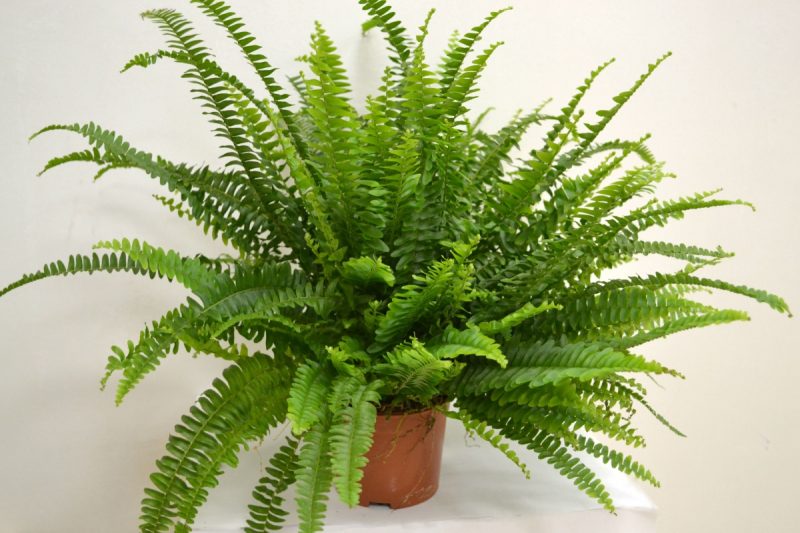
For cooking, you need to take in equal proportions:
- turf land;
- peat;
- sheet earth.
You should also add a little humus and sand. This recipe is the most suitable, forming the very soil conditions that are required by indoor fern.
For the content of nephrolepis, a clay pot will be most suitable. He has the ability to collect excess moisture from the soil, and then give it away as necessary. This nuance helps control the humidity of the earth.
However, clay has the property of being covered with a fungus, which subsequently is very difficult to remove.
Plastic containers are also suitable. It should be remembered that this material does not pass air and does not have good stability. So that the plant feels great and does not fall from the surface, it is necessary to choose a stable and large pot. Its diameter in diameter should be 2 times smaller than the size of the crown of the flower.
Lighting and temperature
The leaves of nephrolepis are large and green, so their need for a large amount of diffused sunlight is quite logical. The plant can tolerate the shadow, but it will not look so spectacular.
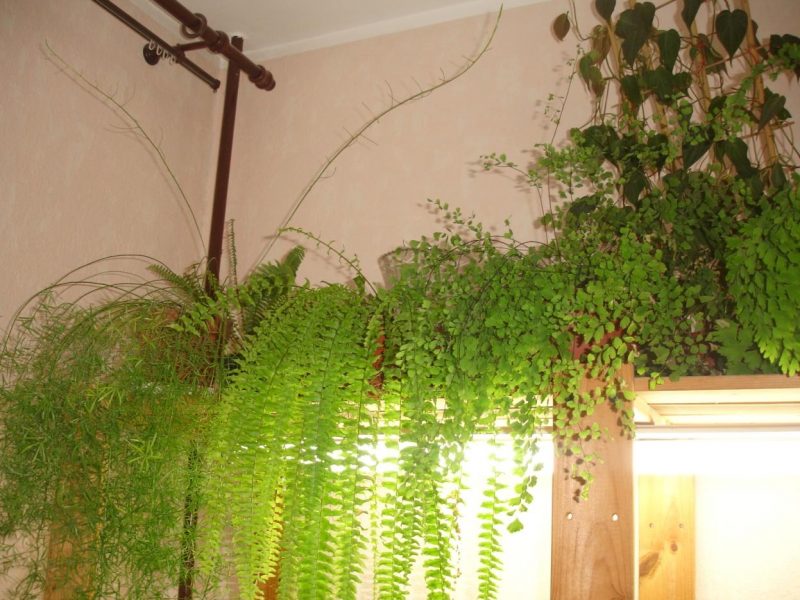
Direct rays of the sun will scorch the leaves, leaving brown spots on them. Therefore, it is better to place the fern near the window, but not on the windowsill.
The optimum temperature for the content is 15-22 degrees. The room may be warmer, especially during the heating season, so during such a period it is recommended to moisten the leaves more often by spraying. The minimum temperature at which the indoor fern survives is 5 degrees.
Watering and spraying
Water the fern with soft water, slightly warm. In the summer season, this can be done 2 times more often than in winter. Otherwise, in the winter, the plant will continue to grow and will be too elongated with small leaves, as there is not enough sunlight.

Watering should be such that the earth in the pot remains slightly moist. Excess water, like drought, are not the best conditions for indoor fern.
Spraying the leaves must be carried out daily, especially during the heating period. Excessive dryness of the air is not suitable for nephrolepis. You can also take care of suitable humidity in the room. To do this, it is recommended to purchase a humidifier or hang a wet towel on the battery regularly. Such a microclimate in an apartment is useful not only for a flower, but also for people.
It is better to take distilled or rain water, since tap water will leave white spots on the green.
Fertilizer and fertilizer
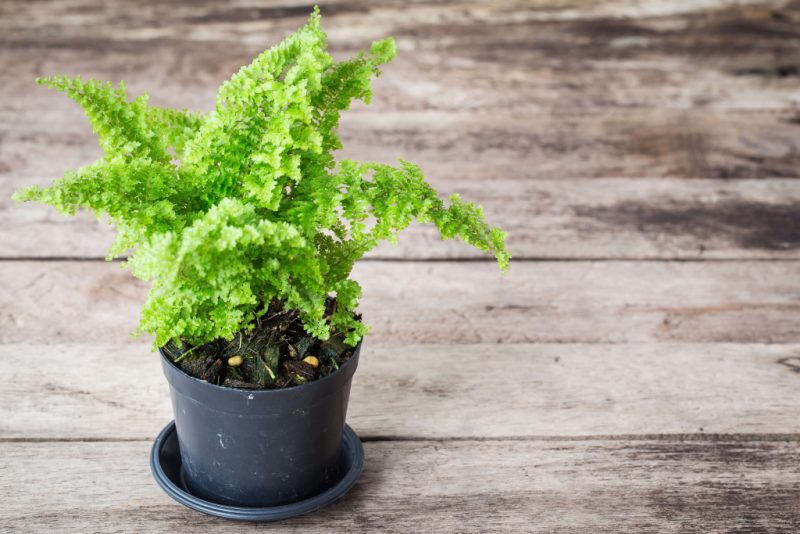
Fertilizing indoor fern is recommended in spring and summer. This can be done using any ready-made solutions for feeding. They must be bred according to the instructions on the packaging. Then add the same amount of pure water to the resulting solution. This feeding option is most suitable for nephrolepis.
How to transplant?
One of the main steps in caring for a green flower is its transplant. It is required to carry out it every year, since the rhizome of the plant grows rapidly. The crown also becomes larger, because of which the previous pot may not withstand its severity. Choose a new container should be 2-3 cm larger in diameter.
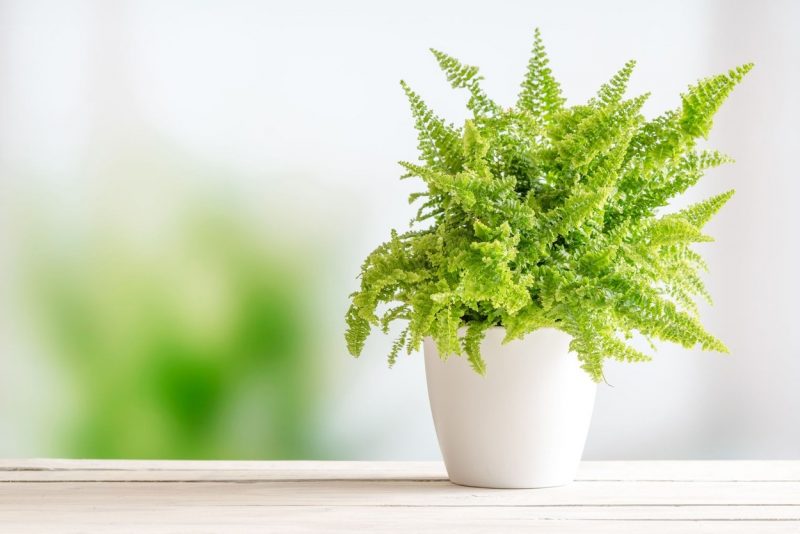
To transplant indoor fern, you will need:
- Gently holding the flower by the base, pull it out of the container along with an earthen lump.
- Shake off part of the old soil from the rhizome. If there are rotting roots, they must be removed.
- Place the plant in a new container, cover the surface with fresh soil.
It is best to transplant in the spring. If this is done at another time of the year, the indoor fern will take root for a long time and look not the best way.
Propagation of indoor fern
The most suitable way for the reproduction of nephrolepis is the division of the mother bush. This action can be performed during the transplant period. The plant is inspected for the presence of daughter rosettes, after which they are separated with part of the roots from the common rhizome. They also need to be planted in advance prepared soil.

At the stage of growing a new fern, it is necessary to carefully monitor the microclimate in the room and strictly observe all the requirements for flower care. Some outlets do not take root, which is the norm. However, dividing the indoor fern is the easiest method for propagating it.
Plant diseases and pests
Fern can be sick, like any other house plant. Most of the troubles are associated with improper care, as well as insufficient attention of the hostess at the stage of acquiring and replanting a flower.
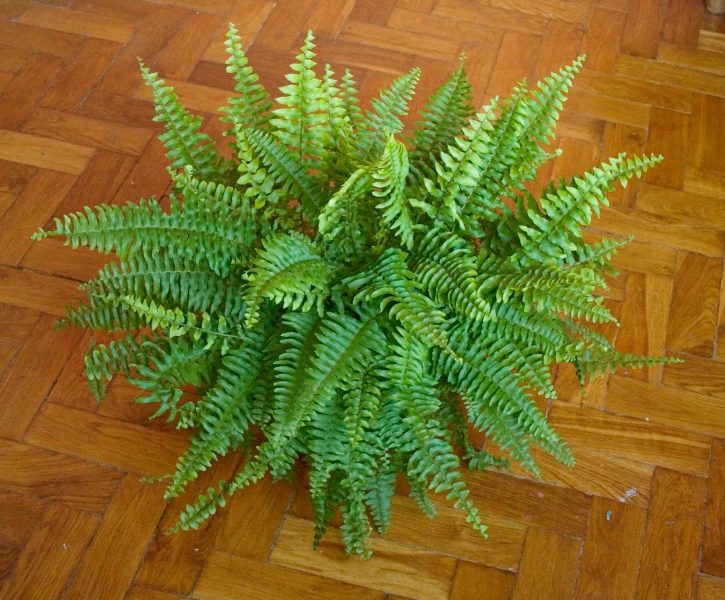
To reduce the incidence of nephrolepis, you must:
- Refuse self-preparation of the soil. Shop soil is thoroughly sterilized and free of pests.
- Quarantine newly acquired plants.
- Do not leave the flower in the drafts, in direct sunlight, near the battery.
- Monitor soil moisture, do not overfill the soil.
If you follow the recommendations for the prevention of diseases of indoor fern, they can be successfully avoided. But if the plant is still sick, it is necessary to quarantine it and immediately take action.
Possible diseases and how to deal with them:
- Anthracnose
Manifested by dark brown streaks at the ends of the leaf. It is recommended to remove the affected leaves from the plant, treat the crown with a fungicide. Watering for some time needs to be reduced, but do not spray the sheets.
- Rhizome rot
First, the leaves turn yellow, then turn brown. The fern dies quickly. At the initial stage, it is important to monitor the irrigation, not to waterlog the soil.
- Leaf spotting
It appears wet brown spots. It is necessary to completely remove the affected areas, treat the plant with fungicide and do not water it for some time.
- Gray rot
Leaves, stems and soil are covered with gray moldy bloom. The fern should be quarantined, removed from it all affected leaves, treated with a solution against mold.
- Pests
The fern is affected: whitefly, white podura, mealybug, nematodes, spider mite, aphids, thrips, mealybugs and others. Most pests start up due to improper plant care. Affected areas should be removed by carefully treating the entire crown and rhizome with a suitable insect repellent. The plant in this case requires quarantine, as pests quickly switch to healthy flowers.
The main problems when growing
All problems that the grower may encounter are related to improper care of the indoor fern. On green leaves, the effects of an inappropriate microclimate or watering immediately begin to manifest themselves.
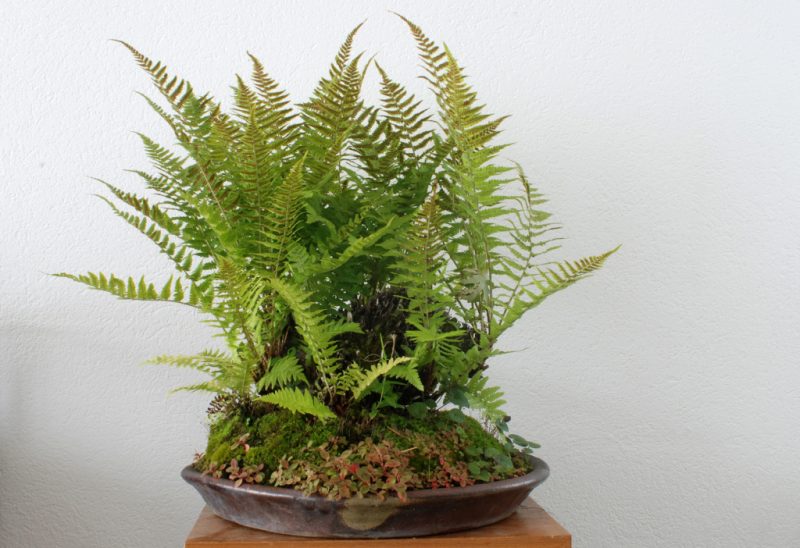
Among them are:
- leaf fall - occurs due to insufficient watering, darkening - the consequences of overflow;
- yellowness on the leaves indicates dry air;
- slow growth and pale green color of foliage indicates insufficient feeding.
If you comply with all the conditions of the nephrolepis, he will decorate any room with the greenery of his magnificent crown. Therefore, all efforts to care for the flower are definitely worth the time spent.












